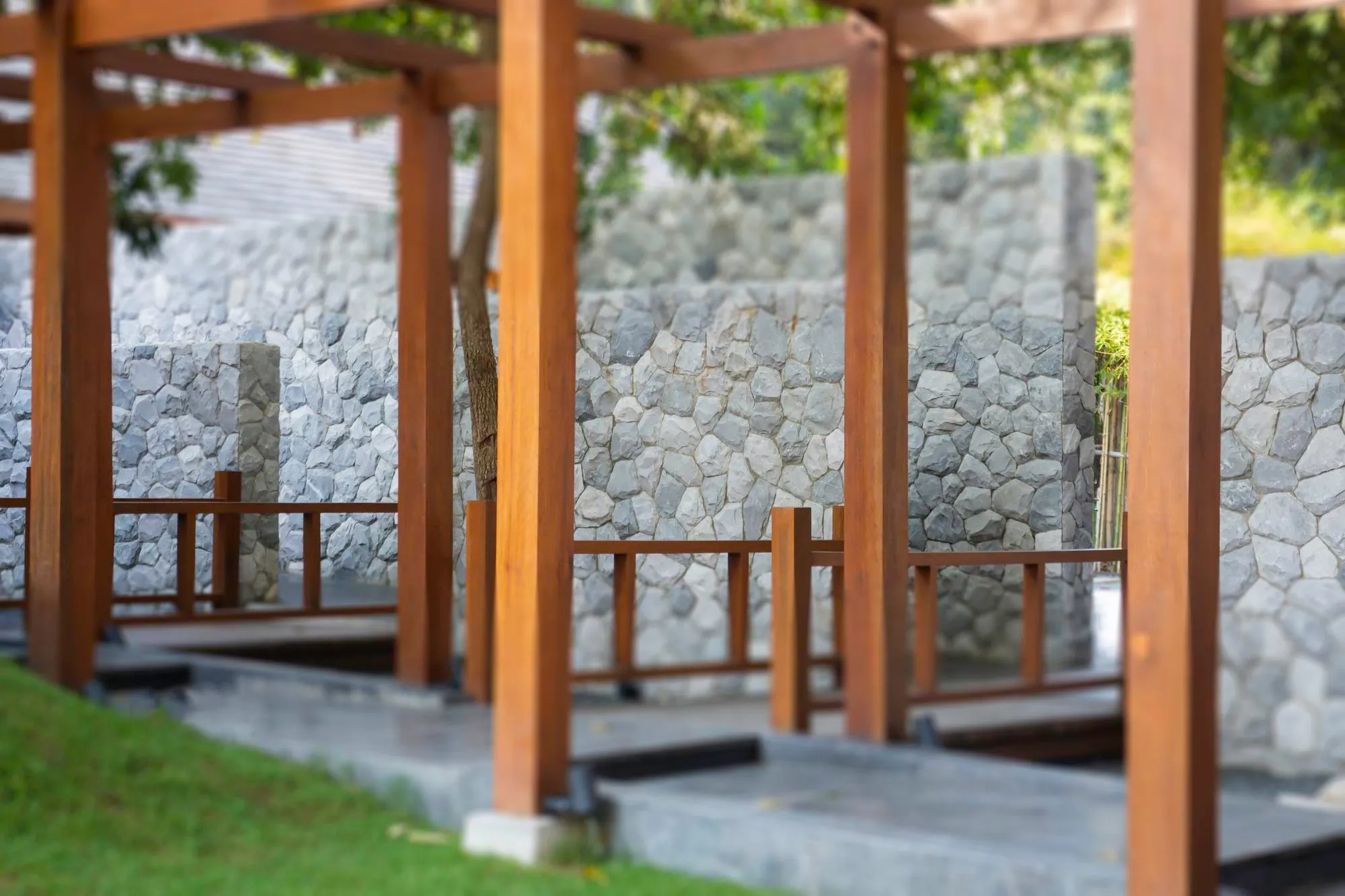Creating outdoor rooms is an excellent way to extend your living space into your yard, allowing you to enjoy the outdoors in comfort and style. Pergolas, arbors, and seating walls are three key elements that can help define and enhance outdoor rooms. These features provide shade, structure, and a sense of enclosure, transforming your outdoor space into a functional and inviting retreat. In this post, we’ll explore how to incorporate these features into your landscape design to create beautiful, cozy, and practical outdoor rooms.
Why Create Outdoor Rooms?
Outdoor rooms offer several benefits, making them a valuable addition to your landscape:
- Extend Living Space: Outdoor rooms give you the ability to enjoy more of your home’s space. You can create a dedicated area for dining, lounging, or entertaining guests.
- Increased Functionality: By defining distinct areas within your yard, you can create spaces for different activities, making your garden more versatile and usable.
- Enhanced Aesthetic Appeal: Structured features like pergolas, arbors, and seating walls can elevate the look of your garden, providing focal points, visual interest, and a sense of harmony.
- Privacy and Comfort: Outdoor rooms offer an opportunity to add privacy, seclusion, and comfort, turning your yard into a peaceful sanctuary away from the outside world.
Pergolas: Adding Shade and Structure
A pergola is an elegant and functional structure that can define an outdoor room, providing both shade and a visual focal point. It consists of vertical posts supporting horizontal beams, with an open lattice or roof that allows light to filter through. Here’s how to incorporate a pergola into your outdoor room design:
Benefits of Pergolas
- Provides Partial Shade: While a pergola won’t offer complete shade like a roofed structure, it will reduce the sun’s intensity, making it more comfortable to spend time outdoors. You can add retractable canopies, curtains, or climbing plants to provide additional shade.
- Defines the Space: Pergolas create a clear boundary for an outdoor room, making it feel like a separate area within your yard. This can be especially useful for creating outdoor dining or lounging areas.
- Supports Climbing Plants: The lattice design of a pergola makes it ideal for growing climbing plants like wisteria, roses, and grapes. These plants will add beauty, fragrance, and additional shade to the space.
Tips for Incorporating a Pergola
- Placement: Position your pergola over a seating area, dining table, or hot tub to create a sheltered space for relaxation or entertaining.
- Materials: Choose materials that complement your landscape style. Wood is a traditional choice, while metal or vinyl can provide a more modern look.
- Lighting: Add string lights, pendant lights, or lanterns to your pergola to create a cozy, ambient atmosphere at night.
Arbors: Framing Entryways and Garden Pathways
An arbor is a smaller, often arching structure made from wood, metal, or a combination of materials. It is typically placed at the entrance to a garden path or as a focal point in a landscape. Arbors provide a vertical element to your outdoor space, enhancing its architectural appeal while serving as a beautiful garden feature.
Benefits of Arbors
- Inviting Entryway: Arbors can create a welcoming entrance to your outdoor rooms, paths, or garden beds. They offer a sense of enclosure and privacy while framing the space.
- Support for Climbing Plants: Arbors provide the perfect structure for climbing plants such as roses, clematis, or honeysuckle. These plants will add color, fragrance, and vertical interest to your space.
- Versatile Placement: Arbors can be placed at the entrance to a garden, along a pathway, or even within a garden bed to highlight specific areas.
Tips for Incorporating an Arbor
- Add a Gate: For a more functional design, consider incorporating a gate into the arbor, creating a private entrance to your garden or outdoor room.
- Climbing Plants: Choose plants that are suited to your climate and growing conditions. Train climbing vines to grow over the arbor for a lush, natural look.
- Landscaping consultation can help you design the perfect placement and plant choices for your arbor, ensuring it complements your overall garden style.
Seating Walls: Creating a Comfortable, Defined Space
A seating wall is a practical and stylish way to define an outdoor room while providing comfortable seating for guests. Seating walls are typically built from materials like stone, brick, or concrete and can be incorporated into patios, garden beds, or around fire pits. They create a cozy and inviting space for relaxation and socializing.
Benefits of Seating Walls
- Durable Seating: Unlike traditional patio furniture, seating walls provide permanent seating that is built to last. They don’t need to be moved or stored in the off-season.
- Space Efficiency: Seating walls maximize the use of space by providing seating without taking up much room. They’re ideal for smaller yards where you need to make the most of every square inch.
- Adds Structure and Style: Seating walls can help define the boundaries of an outdoor room, creating a sense of enclosure. They can also add texture and interest to your garden or patio.
Tips for Incorporating a Seating Wall
- Integration with Hardscaping: Integrate your seating wall with other hardscape elements, such as patios or walkways, to create a cohesive outdoor space. A well-designed seating wall can function as both seating and a border for a garden bed or patio.
- Add Cushions for Comfort: While seating walls provide sturdy seating, you can enhance comfort by adding cushions or pillows that are weather-resistant and suitable for outdoor use.
- Stonework is a durable and timeless material for building seating walls that blend seamlessly with your garden or patio.
Combining Pergolas, Arbors, and Seating Walls
For a truly stunning outdoor room, consider combining pergolas, arbors, and seating walls into your landscape design. These features can work together to create a functional, beautiful, and inviting space.
- Pergola + Seating Wall: Place a seating wall around the perimeter of your patio, then add a pergola to provide shade and shelter. This creates a cozy gathering spot for dining or relaxing.
- Arbor + Pathway: Use an arbor to frame a pathway leading to your outdoor room, creating a beautiful entrance to your garden or seating area.
- Seating Wall + Fire Pit: Combine a seating wall with a fire pit to create a comfortable, inviting area for evening relaxation or social gatherings. This combination provides both seating and a natural gathering place for friends and family.
Conclusion
Creating outdoor rooms with pergolas, arbors, and seating walls enhances the beauty and functionality of your garden or patio. These features provide shade, structure, and seating, while also adding a sense of privacy and enclosure to your outdoor space. Whether you’re hosting guests, enjoying a quiet moment, or simply relaxing outdoors, these features will make your yard more inviting and usable throughout the year.
For personalized designs and professional installation, landscaping services can help you bring your vision for an outdoor room to life.





